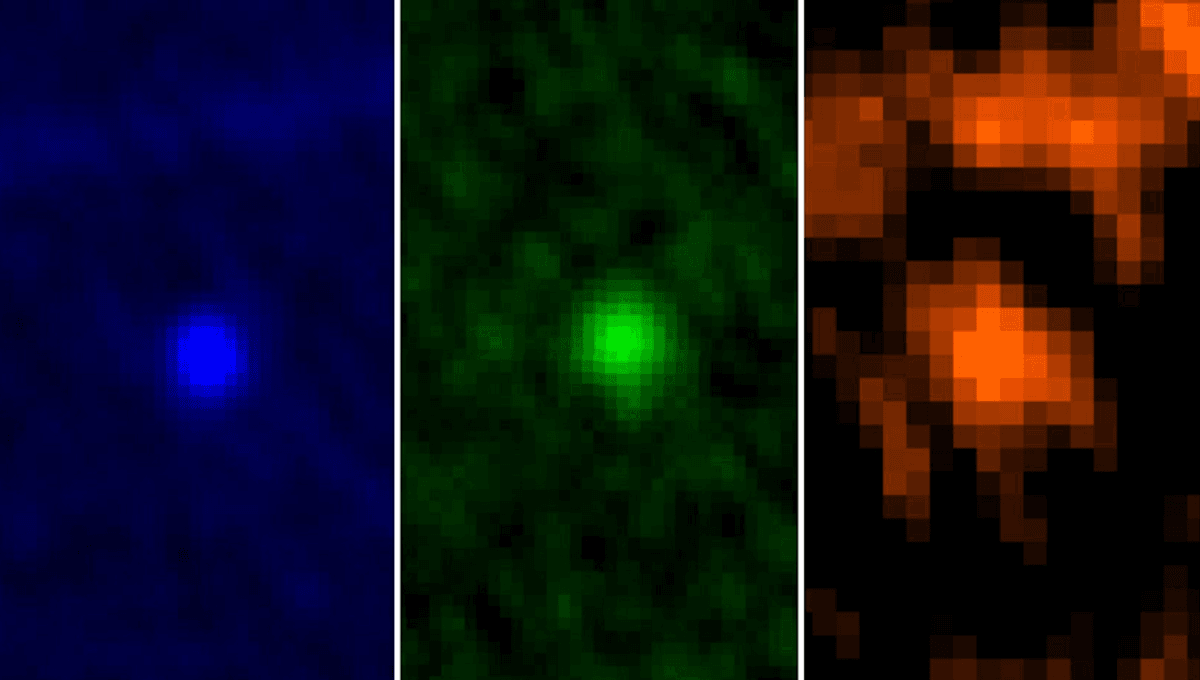
A new study looking at the potentially hazardous asteroid 99942 Apophis has suggested that the odds of an impact in 2029 or 2036 is ever so slightly higher than we thought.
When Apophis was first discovered in 2004, observations briefly placed it at level 4 on the Torino impact hazard scale, with a score of 0 meaning the likelihood of impact is zero or thereabouts, and 10 meaning “a collision is certain, capable of causing global climatic catastrophe that may threaten the future of civilization as we know it, whether impacting land or ocean.”
While level 4 might sound low, it is the highest level of any object that has been discovered since NASA first started monitoring potentially hazardous Near-Earth Objects (NEOs).
“A close encounter, meriting attention by astronomers,” is how NASA describes level 4. “Current calculations give a 1 percent or greater chance of collision capable of regional devastation. Most likely, new telescopic observations will lead to re-assignment to Level 0. Attention by public and by public officials is merited if the encounter is less than a decade away.”
Further observations ruled out a collision in 2029, as well as in 2036 and 2068, though they will still be close encounters. More recent observations have consistently found Apophis is on course to miss Earth in all of these time frames.
However, we cannot track all space objects. We find smaller objects quite regularly, sometimes through astronomical observations and surveys, and sometimes when (or shortly before) they collide with our atmosphere.
In the new study, Canadian astronomer Paul Wiegert attempted to look at the odds of a small object colliding with Apophis and redirecting it towards Earth. In a previous study, Wiegert and co-author Ben Hyatt looked at the catalog of known asteroids and ruled out a collision, though there was a small chance of a collision with material traveling with a few of the objects.
The new study looked at what sized object would be needed to shift Apophis into an Earth-bound trajectory in 2029, as well as putting it into other trajectories that would result in a collision with Earth further down the line, after its close approach in 2029. The bad news is that a relatively small impactor, of around 0.6 meters (2 feet), could be enough to push the asteroid into one of the 2029 “keyhole” trajectories around Earth which could put it on course for a later impact. To create an impact in 2029, Apophis would need to collide with an object of around 3.4 meters (11.2 feet).
The good news, however, is that space is big. Really big, in fact. Though collisions have been observed and inferred from monitoring asteroids, they are still exceedingly unlikely, and if it did occur it would have to hit it in the right direction to cause an impact with Earth.
Looking at the number of objects over 3.4 meters that impact Earth every year and then correcting for the size of Apophis (340 meters/1,100 feet), Wiegert puts the odds of an asteroid impacting it between now and 2029 as exceptionally low.
“The odds of an unseen small asteroid deflecting Apophis enough to direct it into a collision with Earth in 2029 (d ≳ 3.4 m, Δv > 5 × 10−2 m s−1) are approximately 10−8,” Wiegert wrote in the study. “Given that only 5% of such impulses are in the correct direction to generate an Earth impact, the overall probability of a small impact directing Apophis into a collision with the Earth is less than one in 2 billion.”
The odds of a smaller object striking it and putting it on course for a later impact, however, is calculated at less than 1 in a million. This is still very good odds, though it makes the risk of impact slightly higher than we previously thought.
Wiegert suggests ways that we should be able to see if Apophis has been nudged in our direction when we next get a chance to observe it. For that, we will still have to wait another three years.
“An additional element of the story is that Apophis has been largely unmonitored by telescopes since May 2021 and will remain so through 2027,” he explained. “This arises simply because of the relative geometry of Apophis, Earth, and the Sun, which puts the asteroid in the daytime sky for the time span in question.”
When we do get a closer look, we should be able to tell if Apophis has been nudged, as long as it wasn’t so recent that the effect of the impact is not yet measurable. But with the odds of impact so low, it’s still nothing to worry about, unless you happen to be NASA, in which case a few more closer observations might be necessary.
“The deflection of Apophis by a small asteroid onto a collision course with Earth in 2029—in addition to being extremely unlikely—will most likely be quickly eliminated as a possibility by simple telescopic observations when Apophis returns to visibility in 2027,” Wiegert concludes.
The study is published in The Planetary Science Journal.
Source Link: The Chance Of Asteroid Apophis Hitting Earth May Be Slightly Higher Than We Thought